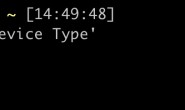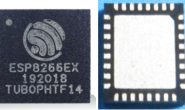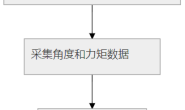在库中安装如下:  务必注意版本号,最好用0.7.8,其他版本均出现不正常状况! 这里记录两个重要的功能:
务必注意版本号,最好用0.7.8,其他版本均出现不正常状况! 这里记录两个重要的功能:
- ESP8266WiFi.h
- ros.h
espros在github上下载,目前还是比较小众的,星星都没有过百呢! 两段代码简单测试一下:
chatter
#include <ESP8266WiFi.h>
#include <ros.h>
#include <std_msgs/String.h>
#include <std_msgs/Int16.h>
#include <std_msgs/Float64.h>
ros::NodeHandle nh;
int led;
void messageCb(const std_msgs::Int16& msg) {
if(msg.data > 0){
led=abs(msg.data);
digitalWrite(led, HIGH-digitalRead(led)); // blink the led
}
}
std_msgs::String str_msg;
ros::Publisher chatter("chatter", &str_msg);
ros::Subscriber<std_msgs::Int16> sub("led", &messageCb);
char hello[15] = "ESP8266 alive!";
void setup()
{
pinMode(2, OUTPUT);
pinMode(12, OUTPUT);
pinMode(13, OUTPUT);
pinMode(15, OUTPUT);
nh.initNode();
nh.advertise(chatter);
nh.subscribe(sub);
}
void loop()
{
str_msg.data = hello;
chatter.publish( &str_msg );
nh.spinOnce();
delay(1000);
}
注意,2号可以开关wifi边上的小灯哦。
Sketch uses 266816 bytes (25%) of program storage space. Maximum is 1044464 bytes.
Global variables use 28452 bytes (34%) of dynamic memory, leaving 53468 bytes for local variables. Maximum is 81920 bytes.
esptool.py v2.6
2.6
esptool.py v2.6
Serial port /dev/ttyUSB0
Connecting....
Chip is ESP8266EX
Features: WiFi
MAC: 2c:f4:32:2d:58:0a
Uploading stub...
Running stub...
Stub running...
Changing baud rate to 460800
Changed.
Configuring flash size...
Auto-detected Flash size: 4MB
Compressed 270976 bytes to 197513...
Writing at 0x00000000... (7 %)
Writing at 0x00004000... (15 %)
Writing at 0x00008000... (23 %)
Writing at 0x0000c000... (30 %)
Writing at 0x00010000... (38 %)
Writing at 0x00014000... (46 %)
Writing at 0x00018000... (53 %)
Writing at 0x0001c000... (61 %)
Writing at 0x00020000... (69 %)
Writing at 0x00024000... (76 %)
Writing at 0x00028000... (84 %)
Writing at 0x0002c000... (92 %)
Writing at 0x00030000... (100 %)
Wrote 270976 bytes (197513 compressed) at 0x00000000 in 4.6 seconds (effective 472.9 kbit/s)...
Hash of data verified.
Leaving...
Hard resetting via RTS pin...
试下如下命令吧: rosrun rosserial_arduino serial_node.py _port:=/dev/ttyUSB0  rostopic list rostopic pub /led std_msgs/Int16 “data: 2” rostopic echo /chatter
rostopic list rostopic pub /led std_msgs/Int16 “data: 2” rostopic echo /chatter 
esproswifi
#include <ESP8266WiFi.h>
#include <ros.h>
#include <std_msgs/String.h>
#include <std_msgs/Int16.h>
#include <std_msgs/Float64.h>
#include <Servo.h>
//
// WiFi Definitions //
//
const char* ssid = "HUAWEI_WiFi";
const char* password = "xxxxxxxx";
IPAddress server(192, 168, 3, 153); // ip of your ROS server
IPAddress ip_address;
int status = WL_IDLE_STATUS;
WiFiClient client;
class WiFiHardware {
public:
WiFiHardware() {};
void init() {
// do your initialization here. this probably includes TCP server/client setup
client.connect(server, 11411);
}
// read a byte from the serial port. -1 = failure
int read() {
// implement this method so that it reads a byte from the TCP connection and returns it
// you may return -1 is there is an error; for example if the TCP connection is not open
return client.read(); //will return -1 when it will works
}
// write data to the connection to ROS
void write(uint8_t* data, int length) {
// implement this so that it takes the arguments and writes or prints them to the TCP connection
for(int i=0; i<length; i++)
client.write(data[i]);
}
// returns milliseconds since start of program
unsigned long time() {
return millis(); // easy; did this one for you
}
};
Servo s;
int i;
void chatterCallback(const std_msgs::String& msg) {
i = atoi(msg.data);
s.write(i);
}
ros::Subscriber<std_msgs::String> sub("message", &chatterCallback);
ros::NodeHandle_<WiFiHardware> nh;
void setupWiFi()
{
WiFi.begin(ssid, password);
Serial.print("\nConnecting to "); Serial.println(ssid);
uint8_t i = 0;
while (WiFi.status() != WL_CONNECTED && i++ < 20) delay(500);
if(i == 21){
Serial.print("Could not connect to"); Serial.println(ssid);
while(1) delay(500);
}
Serial.print("Ready! Use ");
Serial.print(WiFi.localIP());
Serial.println(" to access client");
}
void setup() {
Serial.begin(115200);
setupWiFi();
delay(2000);
s.attach(2); // PWM pin
nh.initNode();
nh.subscribe(sub);
}
void loop() {
nh.spinOnce();
delay(500);
}
注意wifi名称和密码一定要正确!!! 然后就一切正常了:  使用如下命令: rosrun rosserial_python serial_node.py tcp
使用如下命令: rosrun rosserial_python serial_node.py tcp 

#include <ESP8266WiFi.h>
#include <ros.h>
#include <std_msgs/String.h>
#include <std_msgs/Int16.h>
#include <std_msgs/Float64.h>
#include <Servo.h>
//
// WiFi Definitions //
//
const char* ssid = "HUAWEI_WiFi";
const char* password = "cslgcslg";
IPAddress server(192, 168, 3, 153); // ip of your ROS server
IPAddress ip_address;
int status = WL_IDLE_STATUS;
WiFiClient client;
class WiFiHardware {
public:
WiFiHardware() {};
void init() {
// do your initialization here. this probably includes TCP server/client setup
client.connect(server, 11411);
}
// read a byte from the serial port. -1 = failure
int read() {
// implement this method so that it reads a byte from the TCP connection and returns it
// you may return -1 is there is an error; for example if the TCP connection is not open
return client.read(); //will return -1 when it will works
}
// write data to the connection to ROS
void write(uint8_t* data, int length) {
// implement this so that it takes the arguments and writes or prints them to the TCP connection
for(int i=0; i<length; i++)
client.write(data[i]);
}
// returns milliseconds since start of program
unsigned long time() {
return millis(); // easy; did this one for you
}
};
Servo s;
int i;
void chatterCallback(const std_msgs::String& msg) {
i = atoi(msg.data);
s.write(i);
}
std_msgs::String str_msg;
ros::Publisher chatter("chatter", &str_msg);
ros::Subscriber<std_msgs::String> sub("message", &chatterCallback);
ros::NodeHandle_<WiFiHardware> nh;
char hello[20] = "ESP8266 wifi alive!";
void setupWiFi()
{
WiFi.begin(ssid, password);
Serial.print("\nConnecting to "); Serial.println(ssid);
uint8_t i = 0;
while (WiFi.status() != WL_CONNECTED && i++ < 20) delay(500);
if(i == 21){
Serial.print("Could not connect to"); Serial.println(ssid);
while(1) delay(500);
}
Serial.print("Ready! Use ");
Serial.print(WiFi.localIP());
Serial.println(" to access client");
}
void setup() {
Serial.begin(115200);
setupWiFi();
delay(2000);
s.attach(2); // PWM pin
nh.initNode();
nh.advertise(chatter);
nh.subscribe(sub);
}
void loop() {
str_msg.data = hello;
chatter.publish( &str_msg );
nh.spinOnce();
delay(500);
}





